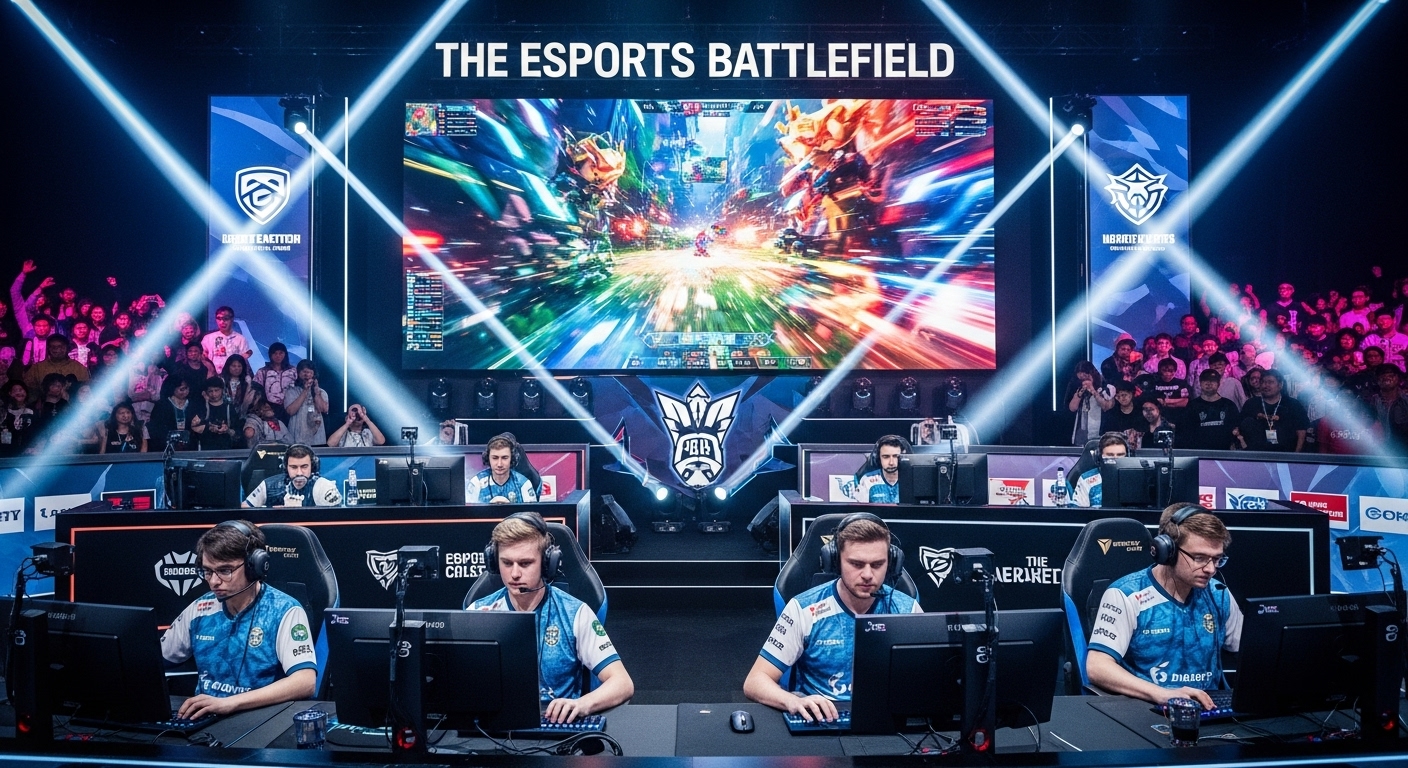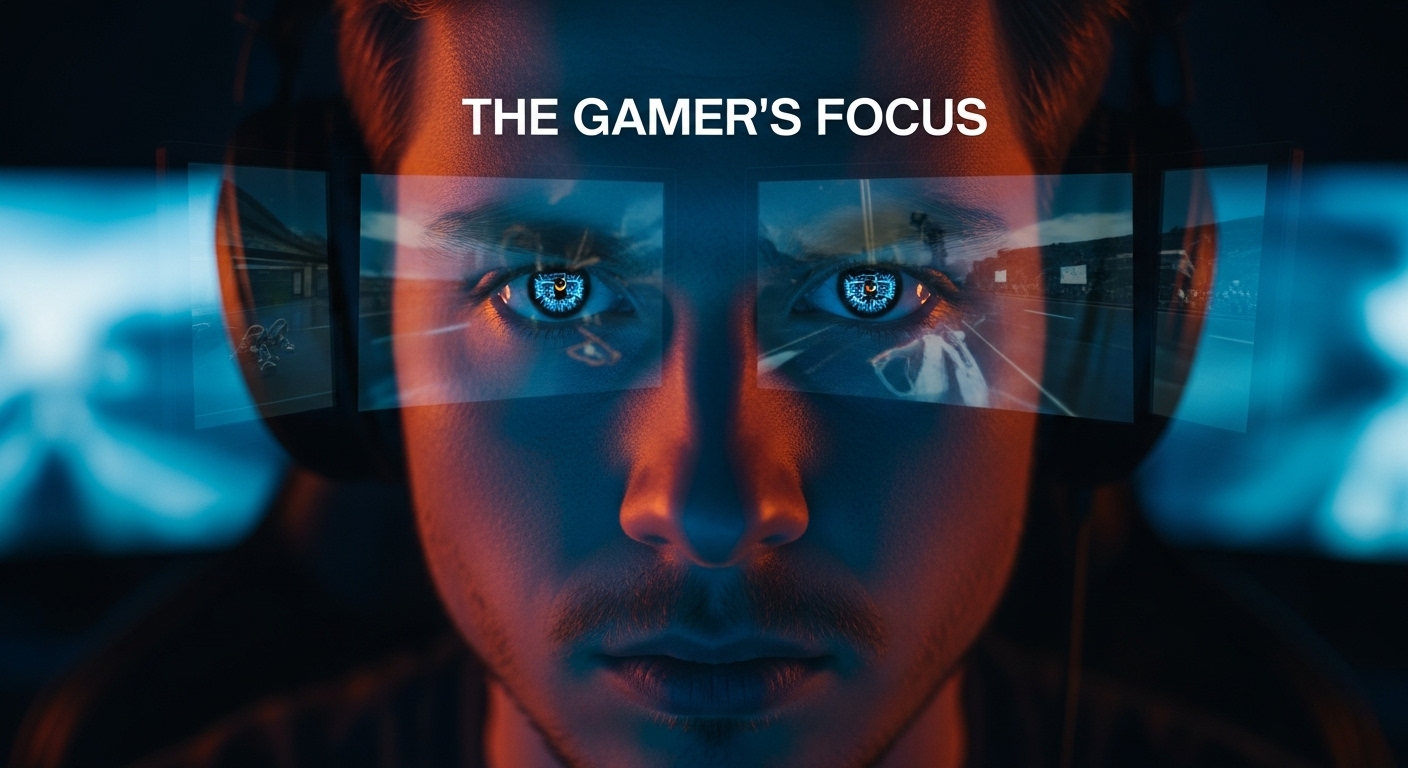Esports, or competitive video gaming, has transformed from a niche hobby into a global phenomenon. Over the past two decades, what was once considered a casual pastime has evolved into a multi-billion-dollar industry with professional players, massive tournaments, and millions of fans worldwide. Esports has reshaped entertainment, sports, and digital culture, blurring the lines between traditional athletic competition and virtual skill-based contests. Its growth reflects the rise of technology, changing media consumption habits, and a generation of gamers who see digital competition as both a career and a lifestyle.
The Origins of Esports
The roots of esports date back to the late 1970s and 1980s when arcade gaming and home consoles became popular. The first video game competitions were informal gatherings where players challenged friends in titles like Space Invaders and Pac-Man. In 1980, the world witnessed the first recorded gaming tournament, the Space Invaders Championship, which drew thousands of participants across the United States. These early competitions laid the groundwork for organized competitive gaming.
In the 1990s, multiplayer gaming began to emerge, especially with the advent of networked computers and the internet. Games like Doom, Quake, and StarCraft enabled players to compete against others in real-time, creating a new culture of competitive gaming. Professional teams and early esports leagues began to form, particularly in South Korea, where StarCraft competitions became highly popular and televised events drew massive audiences.
The Rise of Professional Gaming
By the early 2000s, esports began to professionalize. Sponsors and gaming organizations recognized the commercial potential of competitive gaming. Players started receiving salaries, teams signed contracts, and tournaments offered cash prizes. The introduction of major titles such as Counter-Strike, Warcraft III, and Halo expanded the esports scene globally.
South Korea remained a central hub for professional gaming. Internet cafes, known as PC bangs, became social hubs where aspiring players honed their skills. The popularity of televised esports competitions elevated players to celebrity status and made esports a legitimate career path. Other countries soon followed, creating structured leagues and attracting global attention.
The creation of professional gaming organizations and leagues such as Major League Gaming in North America provided structure and visibility. Players were no longer just hobbyists—they became athletes of a digital arena, training rigorously for competitions that tested strategy, reflexes, and teamwork.
Esports as a Global Phenomenon
Esports is now a worldwide industry. Tournaments are hosted across continents, attracting players from Asia, Europe, North America, and Latin America. The global fanbase has grown exponentially, fueled by streaming platforms that allow millions of viewers to watch competitions in real time. Popular games like League of Legends, Dota 2, and Fortnite draw audiences comparable to traditional sports leagues.
Events like The International, the world championship for Dota 2, offer prize pools exceeding thirty million dollars, rivaling those of traditional sports tournaments. Similarly, League of Legends World Championship consistently attracts millions of viewers online, with live stadium audiences adding to the spectacle. The popularity of esports has made it an integral part of contemporary entertainment culture, engaging both players and spectators in a dynamic and immersive experience.
The Structure of Competitive Gaming
Esports competitions are structured similarly to traditional sports. Professional teams are organized with coaches, analysts, and support staff. Players specialize in specific roles within games, and team strategies are meticulously planned and executed. Training regimens include hours of practice daily, studying opponents, and reviewing gameplay to identify areas for improvement.
Leagues and tournaments provide a framework for competition. Regional leagues feed into international championships, allowing teams to compete at multiple levels. Prize money, sponsorships, and streaming revenue provide financial incentives that have made esports a viable and lucrative career. The professionalization of esports ensures high standards of performance, preparation, and sportsmanship, elevating gaming into a serious competitive pursuit.
The Role of Streaming Platforms
One of the major drivers of esports growth is live streaming. Platforms such as Twitch and YouTube Gaming have revolutionized how audiences engage with competitive gaming. Fans can watch live matches, interact with players through chat, and follow their favorite teams and personalities in real time.
Streaming has not only expanded the fanbase but also provided an additional revenue stream for players and organizations. Donations, subscriptions, and sponsorships generate significant income. Moreover, streaming allows casual gamers and aspiring professionals to learn from experts, creating a continuous cycle of skill development and engagement. The social aspect of streaming further strengthens the community around esports, making it a participatory and interactive form of entertainment.
The Economic Impact of Esports
The financial impact of esports is enormous. The industry generates billions of dollars annually through sponsorships, advertising, media rights, ticket sales, merchandise, and digital content. Major brands such as Nike, Coca-Cola, and Intel invest heavily in esports sponsorships, recognizing the marketing potential to reach a young, tech-savvy audience.
Professional organizations operate like traditional sports franchises, with management, marketing, and content creation teams supporting players and competitions. Esports has also influenced the broader gaming industry, driving game sales, in-game purchases, and online engagement. The economic ecosystem surrounding esports has created jobs, fostered innovation, and transformed gaming into a mainstream entertainment industry.
Training and Discipline in Esports
Contrary to misconceptions, professional esports players undergo rigorous training. Top-level players practice for hours each day, refining skills, studying opponents, and developing strategies. Physical fitness, mental health, and reflex training are increasingly recognized as essential components of performance.
Teams employ analysts to study game data, coaches to refine tactics, and nutritionists to optimize player health. Just as traditional athletes prepare for championships, esports competitors maintain strict routines to stay at the top of their game. The dedication and discipline required demonstrate that esports is not a casual pastime but a serious professional pursuit demanding skill, focus, and resilience.
The Role of Technology in Esports
Technology is at the core of esports. High-performance hardware, gaming peripherals, and internet infrastructure enable players to compete at peak levels. Fast and reliable connections are critical for online competitions, while advanced graphics and gameplay mechanics create immersive experiences for both players and spectators.
Data analytics and AI tools are increasingly used to study gameplay, develop strategies, and optimize performance. Virtual reality and augmented reality are emerging as new frontiers, promising even more immersive competitive experiences. Technology continues to drive innovation in esports, making the industry more sophisticated, professional, and engaging.
Esports and Education
Esports has also entered the educational sphere. Schools and universities around the world now offer esports programs, providing scholarships, organized leagues, and training facilities. These programs teach teamwork, strategic thinking, and leadership, while offering career pathways in gaming, media, and technology.
Academic institutions recognize the potential of esports to engage students, foster community, and develop skills relevant to modern careers. Colleges compete in intercollegiate tournaments, and professional leagues often scout players from these educational programs. The integration of esports into education highlights its legitimacy as a career path and its capacity to cultivate talent.
The Cultural Impact of Esports
Esports has become a cultural force, shaping trends in fashion, music, and social interaction. Gaming personalities are celebrated as celebrities, influencing lifestyles, communication, and entertainment preferences. Esports fandom mirrors traditional sports culture, with merchandise, fan clubs, and dedicated events creating a vibrant community.
Moreover, esports promotes inclusivity and global connection. Players and fans from different countries, backgrounds, and languages unite through shared interests, fostering cross-cultural interaction and collaboration. Esports communities encourage participation, discussion, and creativity, making it a unique social phenomenon.
Challenges Facing the Esports Industry
Despite its success, esports faces challenges. Issues such as player burnout, mental health concerns, and regulatory inconsistencies require attention. Professional players often endure intense schedules, travel demands, and public scrutiny, which can impact well-being. Organizations are increasingly addressing these concerns through wellness programs, counseling, and structured training routines.
Additionally, the industry faces challenges related to fair play, cheating, and intellectual property rights. As esports grows, regulation and governance are necessary to maintain integrity, transparency, and professionalism. Addressing these challenges ensures sustainable growth and long-term credibility for the industry.
The Future of Esports
The future of esports is bright and expansive. Emerging technologies such as virtual reality, augmented reality, and AI-driven games will redefine competition and spectator experiences. Esports is likely to become even more mainstream, with integration into traditional sports networks, global events, and entertainment ecosystems.
Esports may also expand into new genres, platforms, and demographics. Mobile esports is already booming, enabling players from diverse backgrounds to compete. International tournaments will continue to grow in scale, offering larger prize pools, immersive fan experiences, and broader media coverage. The evolution of esports reflects the broader convergence of gaming, technology, and entertainment, creating opportunities that were once unimaginable.
Conclusion
Esports has transformed from humble beginnings into a global entertainment powerhouse. It combines skill, strategy, technology, and creativity in a way that captivates players and audiences alike. The industry has created professional careers, global fan communities, and economic opportunities, demonstrating that competitive gaming is more than a pastime—it is a serious and influential cultural force.
As technology continues to advance and gaming culture expands, esports will remain at the forefront of digital entertainment. It represents a new era of competition, creativity, and connection, showing that the power of play can transcend boundaries, inspire communities, and shape the future of entertainment.
Esports is not just about games—it is about passion, skill, innovation, and the shared joy of competing in a digital arena that unites millions around the world.



